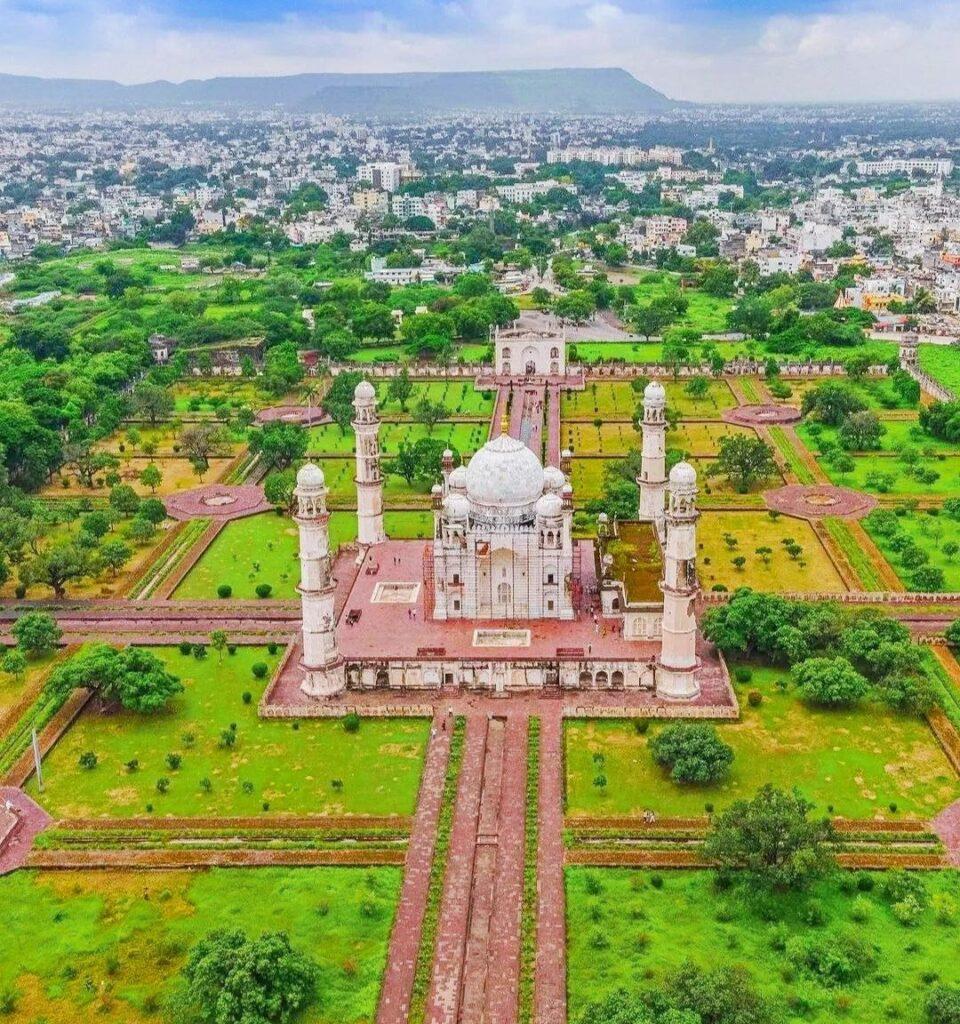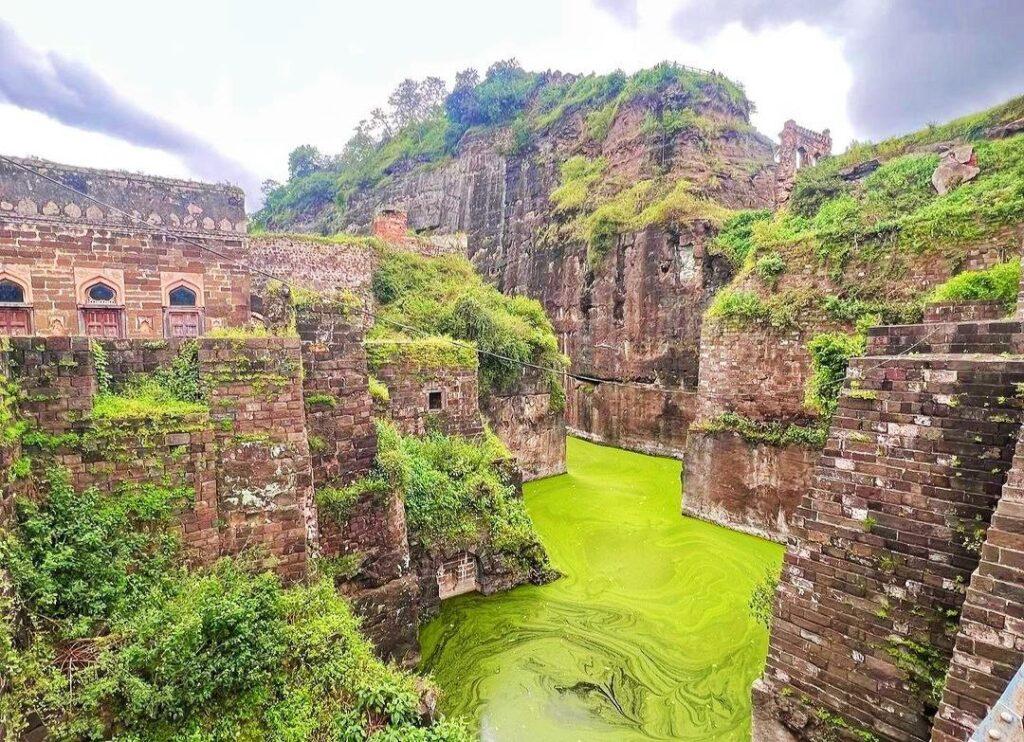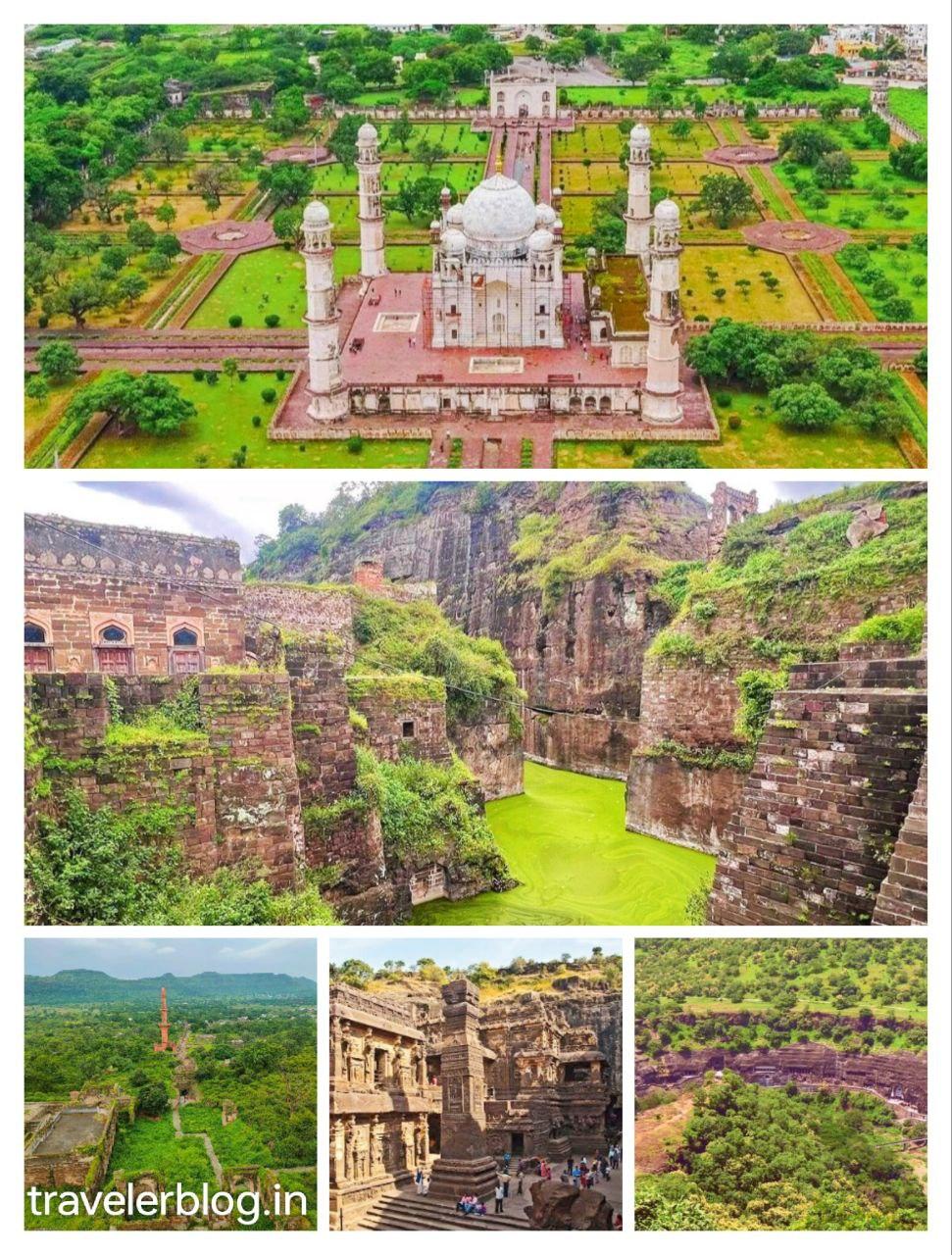Discover Aurangabad’s hidden treasures with our guide to the 5 best places to visit inn aurangabad. Explore the wonders of Grishneshwar Temple, Bibi ka Maqbara.
The Ajanta caves, Ellora caves, and Daulatabad Fort. Uncover the rich history and architectural marvels of this fascinating city in Maharashtra, India.
Introduction 5 Best Places to Visit in Aurangabad
Are you ready for an adventure that will leave you speechless and craving for more? Look no further! Aurangabad, a city steeped in history and culture, is waiting to be explored.
With its rich heritage, magnificent architecture, and mouthwatering cuisine, Aurangabad is a hidden gem in the heart of India.
In this article, we’ll unveil the 5 best places to visit in Aurangabad, ensuring your trip is nothing short of spectacular.
So, what are you waiting for? Pack your bags, put on your explorer’s hat, and let’s dive into the heart of this mesmerizing city!
1. Ajanta Caves
read more detail information about ajanta caves: Ajanta Caves
The Ajanta Caves are an archaeological marvel that takes you back in time, offering a window into India’s artistic and religious history.
What Makes It Special?
Rock-Cut Wonders: These caves, dating back to the 2nd century BCE, are entirely carved out of solid rock, showcasing unparalleled craftsmanship.
Exquisite Paintings: Marvel at the intricate murals depicting Buddhist tales, adorned with vibrant colors that have remarkably stood the test of time.
Spiritual Haven: For the spiritually inclined, the Ajanta Caves are a place of meditation and tranquility, resonating with the echoes of ancient chants.
Insider Tips
Guided Tours: Opt for a guided tour to gain a deeper understanding of the historical and religious significance of the caves.
Timing: The caves are closed on Mondays, so plan your visit accordingly.
Photography: Capture the magic but be mindful of flash photography, which can damage the ancient paintings.
2. Ellora Caves
Read Deatail Article Ellora Caves: Link
Prepare to be awestruck as you venture into the mesmerizing Ellora Caves, another architectural marvel just a stone’s throw from Ajanta.
A Fusion of Faiths
Rock-Cut Splendor: Like Ajanta, the Ellora Caves boast incredible rock-cut temples and monasteries.
Threefold Wonder: What sets Ellora apart is its representation of three different faiths: Buddhism, Hinduism, and Jainism. Marvel at the seamless coexistence of these religions.
Kailash Temple: Don’t miss the Kailash Temple, a monolithic wonder dedicated to Lord Shiva. Its sheer size and detail will leave you spellbound.
Pro Tips
Multilingual Guides: Engage a multilingual guide to unravel the historical and spiritual significance of the caves.
Nighttime Visit: Ellora is beautifully illuminated at night, creating a mystical atmosphere. Check if there are any evening tours available during your visit.
3. Bibi Ka Makbara in Aurangabad: The Taj of the Deccan

The land of India is graced with architectural wonders that tell tales of history, love, and artistic prowess.
While the Taj Mahal in Agra is celebrated worldwide for its exquisite beauty, there exists another gem in the heart of the Deccan Plateau that often goes unnoticed—the Bibi Ka Maqbara.
Often referred to as the ‘Taj of the Deccan,’ this monument holds a unique charm, and in this article, we will delve into its history, architecture, significance, and the experience it offers to visitors.
Historical Significance
The Bibi Ka Maqbara stands as a testament to the Mughal Empire’s influence even in the Deccan region.
Commissioned in the late 17th century, this mausoleum is often compared to the iconic Taj Mahal, thanks to its striking resemblance.
However, it has a historical significance of its own, being built by Prince Azam Shah, the son of the Mughal Emperor Aurangzeb.
The Creator – Aurangzeb’s Daughter
The name ‘Bibi Ka Maqbara’ translates to ‘Tomb of the Lady,’ and it was built in memory of Dilras Banu Begum, who was Aurangzeb’s wife and Azam Shah’s mother.
The architectural marvel is a symbol of Azam Shah’s love and admiration for his mother, which is evident in the exquisite design and meticulous craftsmanship.
Architectural Marvel
As you stand before the Bibi Ka Maqbara, you can’t help but draw parallels with the Taj Mahal. The white marble façade,
the four towering minarets, and the grand dome all echo the magnificence of its northern counterpart.
However, it’s essential to recognize that the Bibi Ka Maqbara holds its unique charm.
The monument features intricate stucco work and delicate carvings, showcasing a blend of Persian and Mughal architectural elements.
While it may be inspired by the Taj Mahal, it exudes its distinct aura.
Materials and Construction
The choice of materials was crucial in recreating the Taj’s splendor. White marble, often associated with Mughal architecture, was used extensively in the construction.
The craftsmen employed traditional techniques to ensure the same level of craftsmanship as seen in the Taj Mahal.
Symbolism and Design Elements
Every element of the Bibi Ka Maqbara carries a deeper meaning. The mausoleum’s design represents an attempt to replicate paradise on Earth, a common theme in Mughal architecture.
The use of symmetry, arches, and intricate calligraphy adds to its mystique.
Preservation Efforts
Preserving the grandeur of the Bibi Ka Maqbara has been a challenge due to the ravages of time and environmental factors.
However, numerous conservation initiatives have been undertaken to protect this historical masterpiece.
Visitor Experience
A visit to the Bibi Ka Maqbara promises an enriching experience. The serene ambiance and stunning architecture make it a photographer’s paradise.
Surrounding gardens add to the beauty, making it a perfect spot for a leisurely stroll.
Cultural Significance
The mausoleum plays an essential role in local festivals and events. It’s not just a historical relic but a living part of the community’s cultural tapestry.
How to Reach Bibi Ka Maqbara
Located in Aurangabad, Maharashtra, Bibi Ka Maqbara is easily accessible by road and air.
The Aurangabad Airport is the nearest air hub, while the city is well-connected by roads and railways.
Best Time to Visit
To enjoy the beauty of Bibi Ka Maqbara without the scorching heat, plan your visit during the cooler months from October to March.
Entry Fees and Timings
The entry fee for Bibi Ka Maqbara varies for Indian and foreign tourists. It’s open from sunrise to sunset, allowing visitors ample time to explore.
Travel Tips
When visiting Bibi Ka Maqbara, don’t forget to carry your camera to capture the intricate details. Comfortable footwear is a must for exploring the gardens, and it’s advisable to visit early in the morning to avoid the crowds.
The Bibi Ka Maqbara, often overshadowed by its more famous counterpart, stands tall as a symbol of love, artistry, and history in the Deccan region.
Its unique blend of Persian and Mughal architectural elements, combined with its historical significance, make it a must-visit destination for history enthusiasts and architecture aficionados alike.
4. Daulatabad Fort: A Fortress of Legends

Daulatabad Fort, perched atop a formidable hill, is a place where history echoes through its ancient walls.
A Citadel of Strength
Impenetrable Design: The fort’s strategic location and intelligent architecture make it a formidable fortress.
Climb the Steep Stairs: Ascend the steep stairway that leads to the top of the hill, and you’ll be rewarded with panoramic views of Aurangabad.
Chand Minar: Explore the stunning Chand Minar, a tower that served as a victory monument, standing tall as a testament to the fort’s glory.
Insider Insights
Wear Comfortable Shoes: The climb can be challenging, so wear comfortable footwear.
Historical Significance: Engage a local guide to uncover the fort’s fascinating history.
5. Panchakki (Water Mill): A Marvel of Engineering
Panchakki, also known as the water mill, is a unique attraction that combines history and ingenuity.
Ancient Engineering Marvel
Hydraulic Engineering: Witness the ingenious use of a water channel system to power the mill, dating back to the 17th century.
Spiritual Connection: The mill served as a source of revenue for a Sufi shrine, emphasizing the integration of technology and spirituality.
Museum Visit: Explore the museum on the premises to learn more about the mill’s functioning and its historical significance.
Tips for Your Visit
Audio Guide: If available, opt for an audio guide to gain a deeper understanding of the mill’s mechanics and history.
Quiet Contemplation: Panchakki’s serene environment makes it a great place for quiet reflection.
Conclusion
Aurangabad, with its amalgamation of historical wonders and cultural treasures, promises an unforgettable journey. From the intricate caves of Ajanta and Ellora to the architectural marvel of Bibi Ka Maqbara, the imposing Daulatabad Fort, and the ingenious Panchakki, this city is a traveler’s paradise.
So, whether you’re an avid history buff, an architecture enthusiast, or simply seeking a serene escape, the 5 best places to visit in Aurangabad offer something for everyone. It’s time to uncover the hidden treasures of this captivating city, where every stone tells a story and every corner invites exploration. Happy travels, adventurers!
FAQs About Aurangabad
Q1: How do I get to Aurangabad?
A: Aurangabad is well-connected by air, rail, and road. The city has its airport, Aurangabad Airport (IXU), with regular flights from major Indian cities. You can also reach Aurangabad by train, with good rail connectivity. If you prefer road travel, there are well-maintained highways.
Q2: What’s the best time to visit Aurangabad?
A: The best time to visit Aurangabad is during the winter months, from October to March, when the weather is pleasant and ideal for sightseeing.
Q3: Is it safe to explore these attractions solo?
A: Yes, Aurangabad is generally safe for solo travelers. However, it’s always a good idea to stay cautious and be aware of your surroundings, like you would in any other city.
Q4: Are there any local dishes I must try in Aurangabad?
A: Absolutely! Aurangabad is famous for its delectable dishes like Naan Qalia, Bhadang, and the aromatic Hyderabadi Biryani. Don’t leave without indulging in these culinary delights.
Q5: How does Bibi Ka Maqbara compare to the Taj Mahal?
Bibi Ka Maqbara draws inspiration from the Taj Mahal but has its unique charm and historical significance.
Q6: Is photography allowed inside the monument?
Yes, photography is allowed, and the intricate details make it a photographer’s paradise.

3 thoughts on “5 Best Places to Visit in Aurangabad: Uncover Hidden Treasures!”